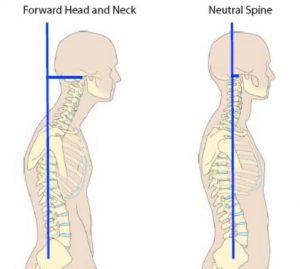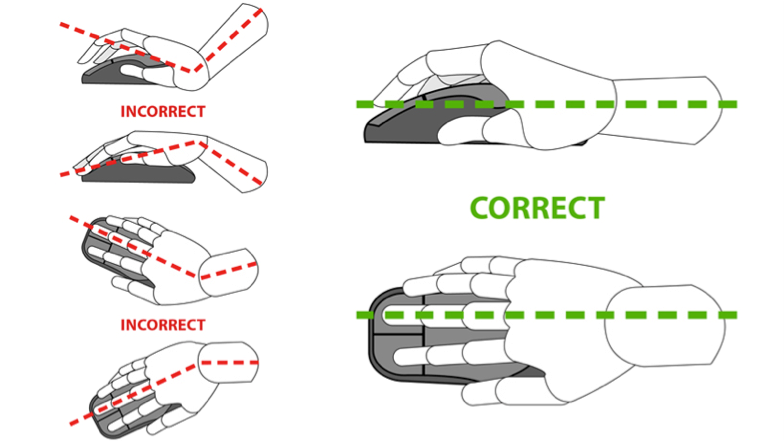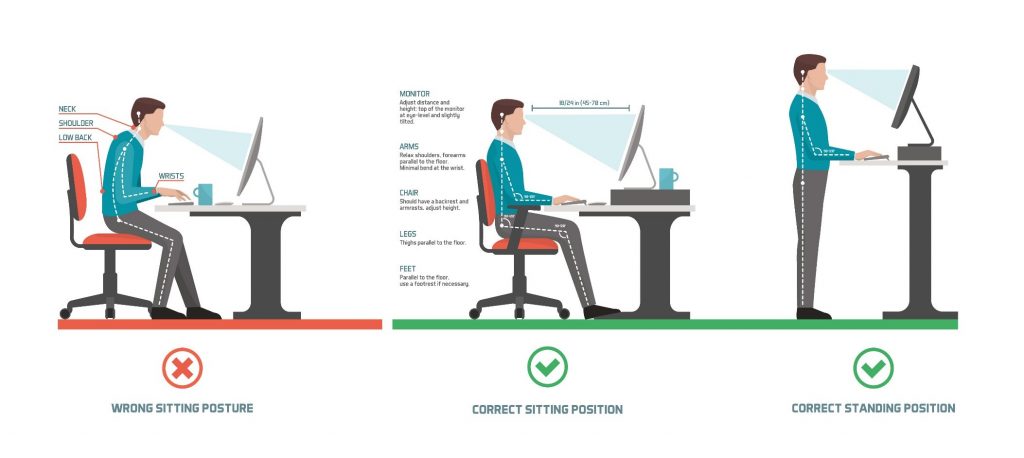
COVID-19 has caused many changes to the way we work. The office has become a ghost town, and although there are some companies returning to the office there are many of us still working from home. Our physio’s have been seeing an increase in desk-related pain and tightness lately, often related to poor workplace set-up with people working from home. And since it looks like home-based working is going to be way more common now and into the future, we thought we’d give you a few tips on how to set your desk up correctly and prevent or manage a few of the common injuries that we’re seeing related to working at home.
Home Vs Office Desk Setup
Do you find your desk set-up at home feels really different from your office desk? Maybe you’re just using the kitchen table and a dining chair, or perhaps your laptop has become your main workstation rather than something you use only sometimes. While these may be okay temporary solutions, they really aren’t designed for regular sustained static postures and may well contribute to tightness and pain for you in the long-term.
For most people, our office work space has been assessed and designed for optimal posture, comfort, desk height, arm position… and the list goes on. You may have had an ergonomic assessment to find the best set-up for you. Unfortunately, most of us can’t get an ergonomic assessment at home, and this is one of the common causes of the recent increase in desk/work related injuries.
Neck And Back Pain From Working At Home
Have you ever tried holding a bowling ball in your hands with your arms outstretched for a long period of time? Sounds silly doesn’t it! Your arms would get REALLY tired.
 The average weight of your head is 6kg, about the same weight as a bowling ball. If you sit with a neutral posture, then it’s like your back and neck muscles only have to hold a bowling ball close to your chest – they still have to work, but not too hard, and they’re very capable of doing this.
The average weight of your head is 6kg, about the same weight as a bowling ball. If you sit with a neutral posture, then it’s like your back and neck muscles only have to hold a bowling ball close to your chest – they still have to work, but not too hard, and they’re very capable of doing this.
However, when we look at your neck, lots of people sit with a forward head posture, which is like asking your neck and back muscles to hold a bowling ball outstretched. If your head is leaning forward, gravity will be trying to push your head down which means our neck and back have to do much more work to keep it in the position you want it in. Over time your neck muscles get tired and fatigued, which puts more stress on other structures like our joints. This eventually leads to pain, either from fatigued muscles or joint irritation, or most likely a combination of both.
How To Improve Your Desk Posture
To help retain a neutral posture and avoid the forward-head position, regularly tuck your chin in towards your chest rather than letting it stick forward. If you work on a laptop, hook it up to a monitor so that you are not constantly looking down (also see the diagram below).
But please remember that changing posture is not simple or quick, and will often need you to do some work on strengthening and mobility around your spine, chest and shoulders. It’s not just a question of telling yourself to “sit tall”. You’ve been sitting in a certain way for years, it’s become a habit, so it’s not going to change overnight!
What Is Perfect Posture?
Also it’s really important that you don’t get too caught up on having “perfect posture”. Research shows that there are actually a range of “normal” postures, and we are able to cope really well with individual variations. What this means is that just because your posture doesn’t fit the generally accepted “ideal posture”, it doesn’t guarantee that you’re going to get any pain. It may be that for your individual body type, lifestyle and workplace practices, your posture is fine, although it may not suit another person and so that person may get pain.
Basically, posture is an individualised thing and whilst there are definite guidelines around what is generally an ideal human posture (including during sustained sitting at a desk), individual variations are normal and aren’t necessarily a problem. Posture may be relevant to a person who is having desk-related neck or back pain, however it is only one part of the whole picture. For some it may be a significant part of their management program, whilst for others it has only a minor impact.
Posture is a complex thing, so please feel free to contact us to speak to one of our physio’s if you would like more information about your posture and if it may be relevant to any pain or tightness that you’re feeling.
Tennis elbow
One of the most common desk injuries is tennis elbow, otherwise known as lateral epicondylalgia. Most people just know it as RSI (Repetitive strain injury). Despite not using the term RSI anymore, lateral elbow pain is due to repetitive microtrauma or strain to the tendons in the elbow. This comes from lots of clicking on a mouse or lots of typing away at the computer. This is made worse if your wrists are bent backward or you are having to reach for your mouse. Two common desk set us mistakes that will aggravate this injury.
- Sitting with your chair too high – this will cause your wrists to extend or bent backwards. This cocked position of your wrists will put excess stress on your wrist extensor muscles and overtime, on your tendon which may cause pain.
- Having your mouse too far away from your body. Having to reach out too far to click on your mouse will also put more stress on your wrist extensors.

How To Setup Your Home Desk
Here is an ergonomics infographic showing how to set up your desk properly. Everyone’s body is slightly different so whilst these ergonomics principles are generally ideal, see what works best for you and adjust things as needed.

If you would like any help setting up your home office space, or any advice about desk posture or pain when working at home, feel free to speak to one of our friendly physio’s on 9280 2322 or contact us online.

